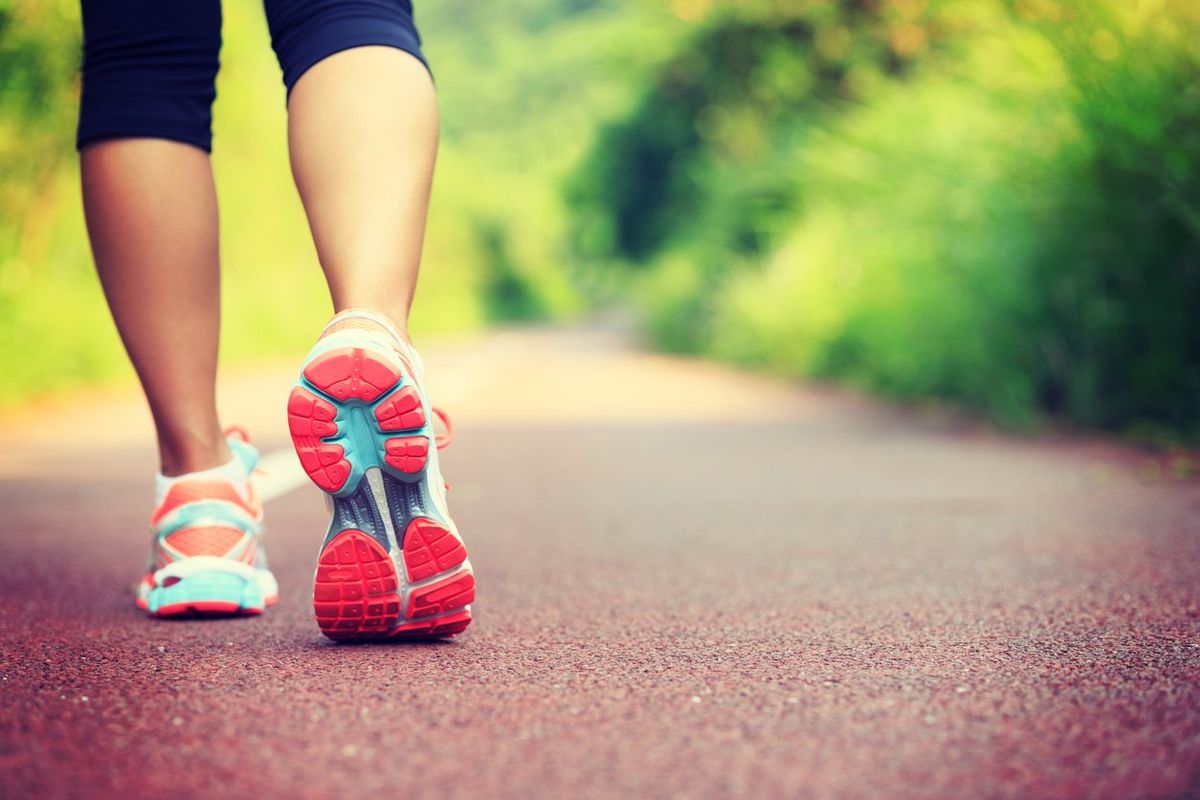As life crept up on Elena Marlow—working as an attorney, mothering a young son—she found less and less time for physical activity. "I let exercise slip by the wayside," she says. "Then it had a domino effect." The more sedentary she became, the more her weight increased and the less healthy and energetic she felt overall.
Although she wanted to make a lifestyle change, Elena, who is 41 and lives in Miami Beach, Florida, felt little motivation to get active again.
Then, one day, she saw a group of people walking on the sand. Each held what looked like ski poles, which they used to push forward with every step. "It looked like something that was great for health benefits and cardiovascular (strength)," Elena says. The people on the beach were doing Nordic walking, an activity that engages both the upper and lower body. Their leader lent Elena a set of poles for her first few walks. "The group helps motivate you, especially early on. The camaraderie helped," she says.
Now with her own walking poles, Elena continues to exercise with the Nordic Walking Club of Miami Beach as well as by herself. She also changed her diet and sleep schedule. The difference is visible: since January 2008, when Elena got herself moving with Nordic walking, she has lost 20 pounds and feels more energized.
Falling off the wagon
You know all the good reasons to exercise. Yet it's so hard to get going when you've stopped for a few months (or years) or never had a regular activity program at all.
Maybe you dropped off from exercising because of boredom, time pressure or the demands of kids. "Staying on track is the hard part," says Diane Austrin Klein, PhD, MPH, assistant professor in the Department of Exercise, Sport and Leisure Studies at the University of Tennessee, Knoxville.
Sometimes we put off exercising because it seems to demand so much exertion to be effective. That effort may be more than many of us, who don't think of ourselves as athletes, can imagine summoning forth.
In reality, moderately intense exercise is better than highly intense workouts for your overall health. Less stressful activity seems to do a better job of decreasing metabolic syndrome, a group of risks—including abdominal obesity, high blood pressure, unhealthy cholesterol levels and insulin resistance—that lead to coronary heart disease and type 2 diabetes.
Find your entry point
How can you get yourself moving? Dr. Klein advises finding an activity or program that "meets your interests, needs, reasons and goals." If going to the gym or walking the high school track has lost its appeal for you, "don't be afraid to try something else," she says.
Tonya Gutch is a senior personal trainer at Cooper Fitness Center in Dallas. Perhaps surprisingly, she's also an advocate of giving yourself permission to do just a little bit of physical activity. That changes the self-defeating idea that doing anything active takes a giant mountain of effort. "When they say you have to do an hour of exercise, it so frustrates people," Gutch says. "It's OK to do five minutes a day…that's a start. People hear that and say, 'I can do that.'"
"Whatever mode of exercise you pick and you like, that's the best mode for you," she adds. "As long as you're moving, that's the key."
Indeed it is. We know that U.S. women aged 25 to 44 will gain up to two pounds a year, mostly as fat. Getting moving now will keep those numbers from adding up, as well as preventing the health problems that come with inactivity.
Ideas to get you going now
Try Nordic walking on the beach, sidewalk or unpaved trails. The technique can be done anywhere, says Claire Walter, author of Nordic Walking, a book to be published in June. Walter uses the poles for two-mile morning walks through a downtown area near her Boulder, Colorado, home. A special rubber cap fits over the pole tips for paved surfaces. "Depending on your aggressiveness (in using the poles), you can burn up to 46 percent more calories as doing the same distance just walking," says Walter. Wear supportive shoes. Poles cost about $70, but some classes lend them to first-timers.
Hate leaving your house? There are great ways to get moving at home. A research team from the American Council on Exercise studied the videogame "Dance Dance Revolution" and determined that, in standard mode, the game provided a good cardio workout while burning about eight calories per minute for adults. You'll also find a buffet of choices on cable exercise channels or on DVDs you can take home from your local library.
Ethnic dancing can ramp up your physical activity without feeling like work. The latest twist: classes in Hawaiian and Polynesian dance have spread from the Pacific to the Atlantic, in part because the hula is welcoming to all shapes and sizes. You'll find Latin (salsa, tango), African, Hindu, Irish and Israeli dancing in community centers, religious institutions and private studios.
If you love gadgets, use them to fuel your fitness. Some online companies offer custom-designed workouts for download to an MP3 player. Then you play the programs while you exercise. "You pick the trainer you work with, and you don't have to be stuck in front of the TV," says Gutch. The simplest of all gadgets, the pedometer, perhaps has the most research supporting its effectiveness. People walk more—and more often—just because they've clipped one of these simple devices to a hip. Watching your step count mount up—and trying to push it higher—will motivate you to get off the sofa.
Add music or chat with an exercise buddy. You'll be amazed at how quickly the time passes. For safety outdoors when wearing earplugs, make sure you can still hear traffic noises and other voices. Working out with someone else, adds Dr. Klein, "makes it more of a commitment for both of you."
Sign up for an event. Look for a charity 5K walk in your area and plan to participate. To prepare, walk shorter distances once or twice a week, then gradually increase the days you walk and your distance. Having an attainable goal, Gutch says, will encourage you to get started and continue.
You don't need to go to the gym for strength training. Rubber tubing resistance bands are lightweight, effective and easy to pack for travel. Keep tubing or light hand weights near the TV, and do strength exercises while watching a favorite show.
Remember the 2Rs: reminders and rewards. Dr. Klein notes that these are especially helpful for motivating physical activity. Use sticky notes or a calendar to chart your schedule and results. When you achieve a fitness goal, reward yourself before going on to the next level. After reaching such a goal, "I go shopping for new (exercise) clothes," says Dr. Klein, "as I find the old ones getting too baggy to look glamorous."







